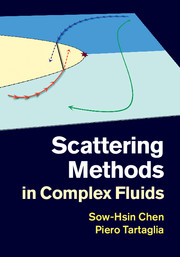4 - The theory of slow dynamics in supercooled colloidal solutions
from Part II - Structural arrest
Published online by Cambridge University Press: 05 May 2015
Summary
Introduction
In 1995, while discussing the future of science, P. W. Anderson made the following statement on the unsolved problems of physics:
The deepest and most interesting unsolved problem in solid state theory is probably the theory of the nature of glass and the glass transition. This could be the next breakthrough in the coming decade. (Anderson, 1995)
In recent years substantial progress has been made in the understanding of the glass transition, both experimentally and theoretically, but from the point of view of supercooled liquids, and in particular liquids of supramolecular aggregates, more than from the point of view of solid state physics. The general name given to these phenomena, commonly found in soft condensed matter, is dynamically disordered arrested phenomena. Examples belonging to this category are the liquid–glass, the sol–gel and the percolation transitions. The reason for this variety of behaviours is related to the large space and time scales of the aggregates, the various shapes the molecular aggregates can take and the corresponding specific interaction potentials, and the possibility of changing a large number of control parameters both at the level of the inter-particle potential and the state of the system. Moreover the length and time scales involved allow the use of powerful experimental techniques, such as neutron and light scattering and confocal microscopy, the latter allowing tracking of the trajectories of individual particles. Examples of systems where dynamical arrest was observed include thermoreversible physical gels, associating polymers at low concentration, micellar systems, star-polymer mixtures, colloidal gels and block-copolymers. All these colloidal systems show the typical slowing down of the dynamics leading to the arrest, with a mechanism which is in general very sensitive to changes in the external control parameters, and which persists over time scales that might be even longer than the typical observation time of the experiment.
- Type
- Chapter
- Information
- Scattering Methods in Complex Fluids , pp. 127 - 156Publisher: Cambridge University PressPrint publication year: 2015



